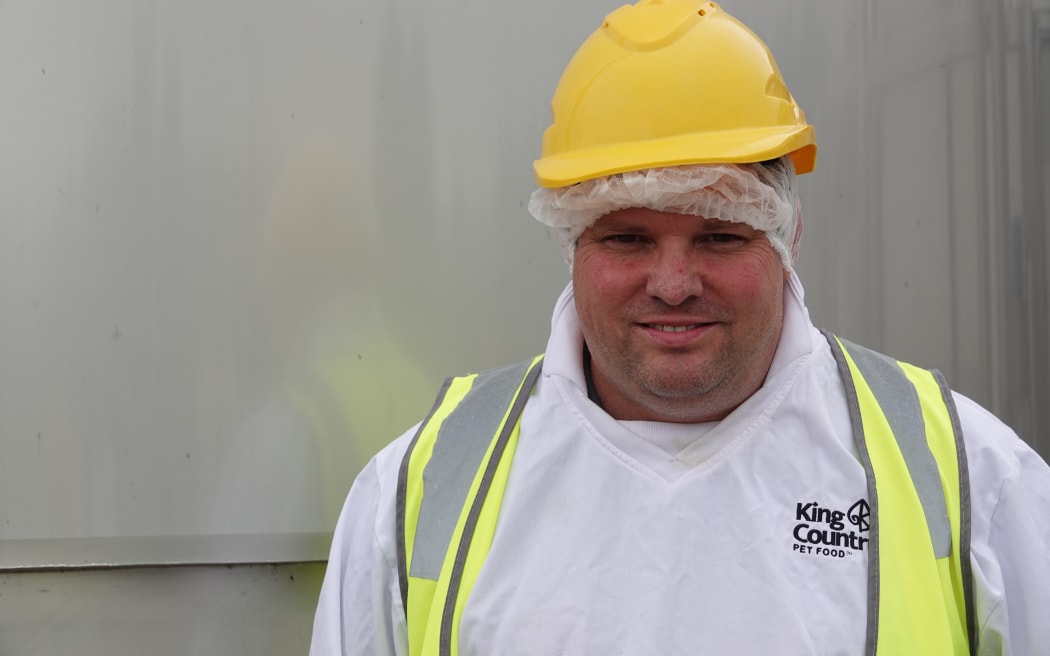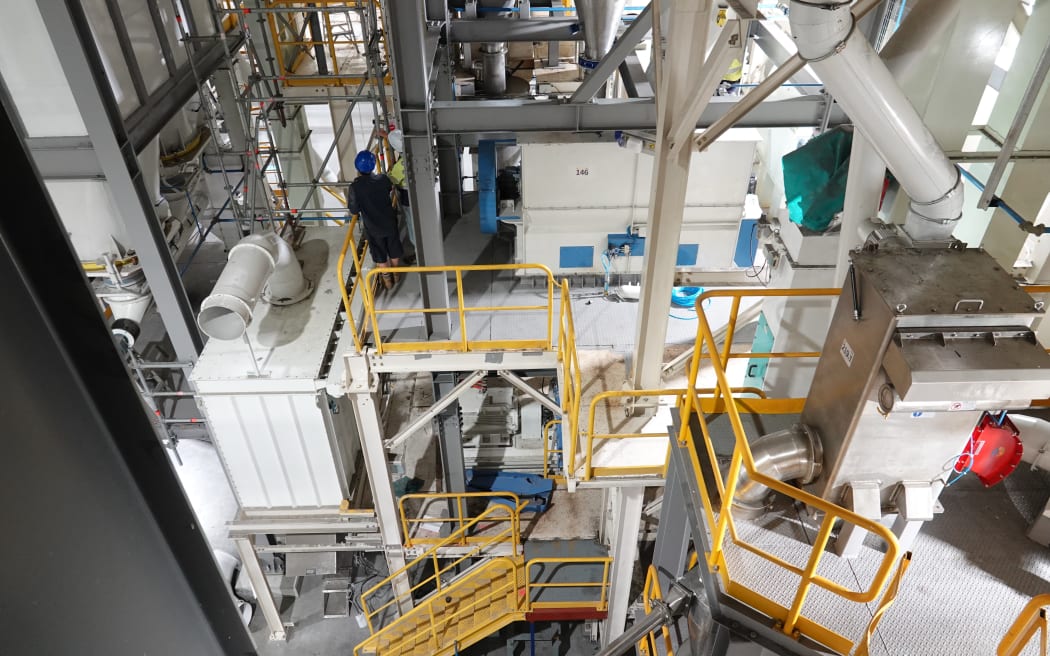 Gareth Stillman says the pet food factory will employ about 120 people. About 60 work there at the moment. Photo: Jimmy Ellingham
Gareth Stillman says the pet food factory will employ about 120 people. About 60 work there at the moment. Photo: Jimmy EllinghamFor decades, manufacturers have been deserting smalls towns, sucking out the lifeblood as they depart. But Taumarunui is bucking this trend - thanks to a pet food factory now up to full-time production. Twenty-five years ago, the meatworks a couple of kilometres from the central North Island town closed, seemingly for good. This devastated the local economy. Now, the former site has a new lease of life as King Country Pet Food, after a $90 million upgrade and three years of refurbishment. King Country Pet Food general manager of commercial Gareth Stillman said about 60 people were now working at the 4.76-hectare site - a workforce that was expected to double. The plant uses New Zealand ingredients to produce dry pet food for various brands, which are on sale here and around the world. "It's very technical, because we're actually feeding an animal a complete, balanced died," Stillman said of the production process. "They've got to eat that for the rest of their life and know that they get the right nutrition. It's 10 times more complicated than human food."

Taumarunui might seem a strange choice for a location, but apart from being able to use some existing infrastructure at the former meatworks, it had other advantages, too. "Taumarunui is in the middle of everywhere and the middle of nowhere. We're two to three hours from any hub. "A lot of the raw material is grown around the Taumarunui region, so it's reasonably centralised," Stillman said. Most of the pet food heading for export goes to the Napier and Tauranga ports - China is its biggest market. King Country Pet Food is owned by Chinese giant Peidi Corporation, which has big plans for the Taumarunui site, hoping to capitalise on the growing global demand for pet food. "It's definitely not fly by night. They're very invested for the long term and they are talking long term all the time, so it's very good for Taumarunui, and they're very good people to work for." Stillman himself has moved to the district, as had many factory staff.

Others, like health, safety and environment co-ordinator Shayla McCormick, live in the region and appreciate the presence of a big employer. "It's a great opportunity for me. I was working seasonal work ... knapsack spraying in the hill country and I did a season in forestry, planting in the winter, to make up the time. "Being able to have a secure, full-time job is excellent." Through this job, McCormick is studying part-time towards a diploma in health and safety, something not previously possible for her in the district. "The rural aspect of the area we live in makes a lot of that work seasonal," she said. "I left the area when I was a small child as the industries collapsed, so we went to Huntly for the mining." She returned a few years ago.

Ruapehu district mayor Weston Kirton said the factory brought a lot of activity to the town, giving it an economic fillip. "It's 25 years since we had a freezing works, which closed in 1999, and there's 150 jobs that went down the gurgler. I was mayor at the time and it was devastating for the economy. "Twenty-five years later, I'm actually the mayor and I see something like this open. It's 120 jobs and huge opportunity there, and it's a world-wide enterprise." Stillman said the factory had overcome Covid delays, but there were some challenges about operating near a town of just 5000 people. "The labour pool is not as good as it could be, but people know we're here now. "We're getting a lot of people moving back to Taumarunui and we can employ them because we're going to need about 120 people." The plant includes a high-spec extrusion machine - which basically presses the biscuits into shape. More modern technology fills the former meatworks. At the moment on one shift, five days a week, the plant can produce 10 tonnes an hour, so 400 a week.
In coming years, it will produce 40,000 tonnes a year, introducing a second shift, Stillman said.














